Ever stared blankly at a user interface, trying to muster the motivation to complete a task? Maybe it was a dull online form, a complicated setup wizard, or a learning module that felt more like a chore than an opportunity. We’ve all been there. But what if those experiences could be as engaging as your favorite game? What if every click, every completed step, every bit of progress felt like a mini-victory? This isn’t wishful thinking; it’s the magic of gamification UI UX.
Gamification, at its core, is about sprinkling elements of game design into non-game contexts. Think points, badges, leaderboards, and progress bars – not for winning a video game, but for achieving real-world goals, whether it’s learning a new language, tracking your fitness, or simply completing your profile on a website. When applied to UI (User Interface) and UX (User Experience), it transforms mundane interactions into memorable, motivating journeys. It’s about leveraging our innate human desire for play, achievement, and recognition to make digital experiences not just functional, but genuinely enjoyable and sticky.
This isn’t just a design trend; it’s a powerful strategy that redefines how users interact with technology. By understanding the psychology behind play and integrating thoughtful game mechanics into user interfaces, designers can create experiences that captivate, educate, and inspire. In this deep dive, we’ll explore exactly what gamification UI UX entails, why it works so incredibly well, its fundamental elements, best practices for implementation, and where this playful approach is headed in the future. Get ready to rethink how you engage with digital products and services.
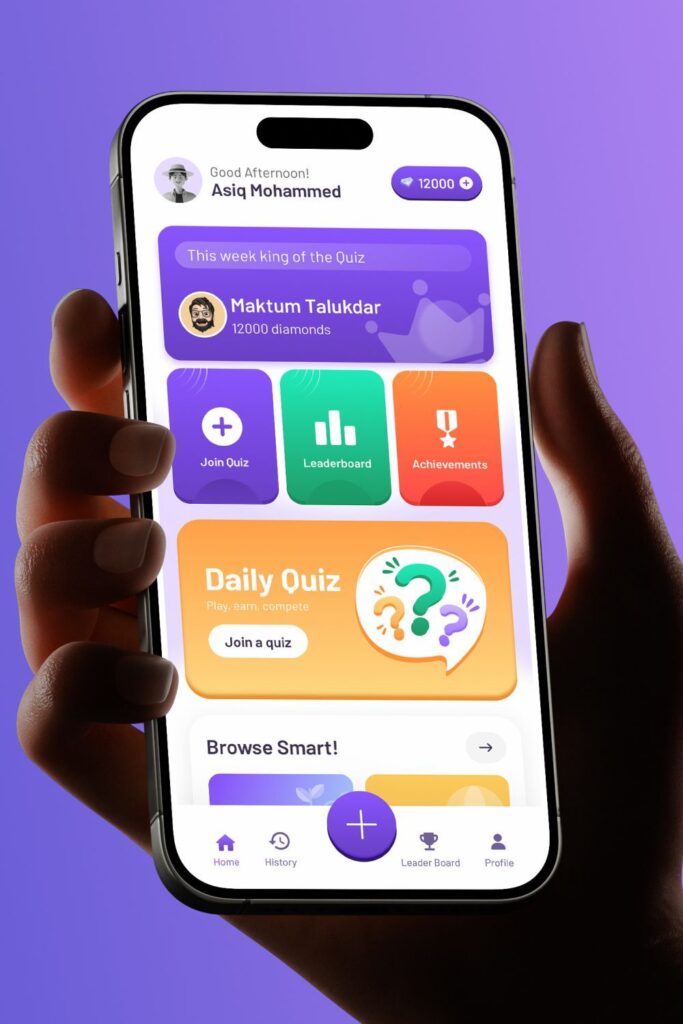
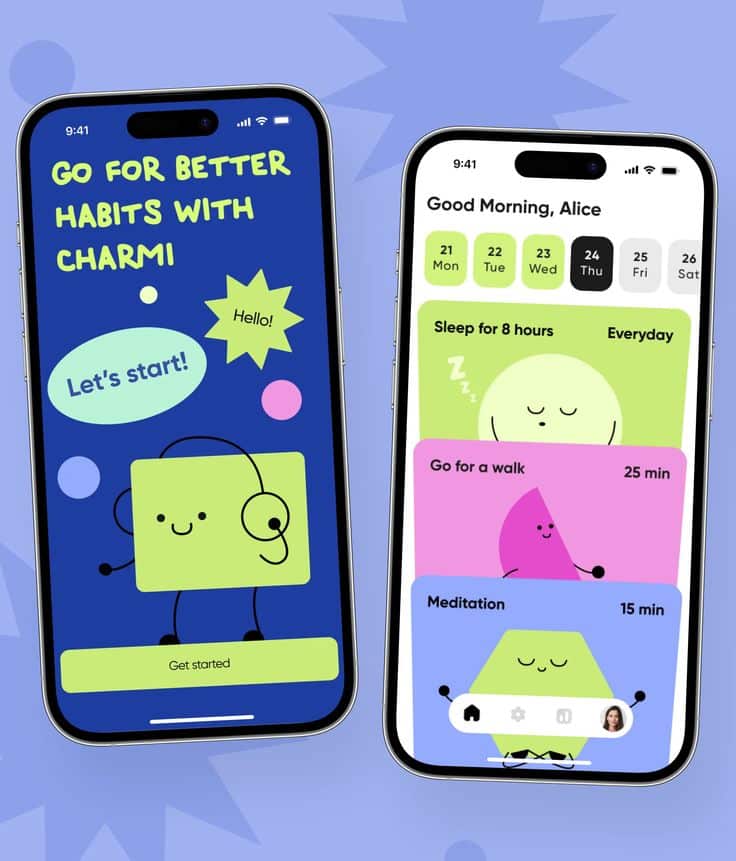
Beyond Badges: What Exactly is Gamification UI UX?
When we talk about gamification in the context of UI/UX, we’re not suggesting turning your banking app into an arcade game. Instead, it’s about strategically applying specific game design elements and game-thinking principles to enhance user engagement, motivation, and loyalty within a non-game digital product or service. The key here is “non-game context.” We’re not building a game; we’re making the experience of using a product feel more like a game.
UI (User Interface) refers to the visual layout, interactive elements, and overall aesthetic of what a user sees and interacts with. Gamification here involves how these elements – think buttons, menus, feedback mechanisms – are designed to incorporate game mechanics. UX (User Experience) encompasses the entire journey a user takes with a product, including their emotions, perceptions, and overall satisfaction. Gamification addresses the UX by structuring this journey in a way that provides clear goals, rewards, and a sense of progression.
The aim is to make tasks feel less like work and more like play, ultimately driving desired user behaviors. For instance, rather than simply presenting a user with a long profile form, a gamified approach might break it down into steps, show a progress bar filling up, and award points or a badge for completion. This subtle shift transforms a potentially tedious task into a series of achievable mini-goals, each offering a small hit of dopamine upon completion.
Common components you’ll find in gamified UI/UX include:
- Points: Numerical values awarded for specific actions (e.g., completing a task, making a purchase, logging in daily).
- Badges/Achievements: Virtual awards earned for reaching milestones or demonstrating specific skills.
- Leaderboards: Rankings of users based on points or achievements, fostering competition.
- Progress Bars/Visual Indicators: Showing users how close they are to completing a task or reaching a goal.
- Challenges/Quests: Structured tasks or sequences of actions users can undertake to earn rewards.
- Virtual Currencies: In-app coins or gems that can be earned and redeemed for virtual or real-world benefits.
- Avatars/Personalization: Allowing users to customize their digital representation, fostering a sense of ownership.
These elements aren’t just decorative; they’re carefully chosen to tap into fundamental human psychological drivers like achievement, competition, social interaction, altruism, and the desire for mastery.
The Psychology Behind the Play: Why Gamification Hooks Us
Why does a simple badge or a rising progress bar feel so satisfying? It’s not just random; it’s deeply rooted in human psychology. Gamification is so effective because it cleverly taps into our intrinsic and extrinsic motivations, transforming the often-mundane into the meaningful.
At the heart of it lies Self-Determination Theory, which posits that humans are driven by three innate psychological needs:
- Autonomy: The desire to control one’s own life and choices. Gamified experiences often give users choices in how they achieve goals or which challenges to pursue.
- Mastery: The urge to improve at something that matters to us. Progress bars, levels, and skill-based challenges speak directly to this.
- Purpose/Relatedness: The need to connect with others and contribute to something larger than oneself. Leaderboards, social sharing, and collaborative tasks fulfill this.
Beyond these, gamification also leverages other powerful psychological principles:
- Flow State: Coined by Mihaly Csikszentmihalyi, the “flow state” is that sweet spot where a challenge perfectly matches our skill level, leading to deep immersion, focus, and enjoyment. Well-designed gamification aims to create this balance, keeping users engaged without overwhelming them or leaving them bored.
- Feedback Loops: Humans crave feedback. Gamified systems provide immediate, clear feedback on actions through points, animations, or sound effects. This instant gratification reinforces desired behaviors and keeps users motivated to continue.
- Scarcity and Urgency: Limited-time offers, daily login bonuses, or expiring challenges create a sense of urgency, encouraging immediate action and repeat engagement. The fear of missing out (FOMO) is a potent motivator.
- Social Influence: We are social creatures. Leaderboards fuel competitive spirits, while features like sharing achievements or collaborating on tasks tap into our desire for recognition, belonging, and social comparison. Seeing others achieve can motivate us to do the same.
- Cognitive Biases: Gamification can subtly play into various cognitive biases. For example, the Endowment Effect makes us value something more once we “own” it (like a virtual item or badge). Loss Aversion makes us more motivated to avoid losing something we’ve gained (e.g., maintaining a daily streak). These elements create a powerful psychological pull.
By thoughtfully applying these psychological triggers, gamification UI UX transforms a simple interaction into an engaging experience that resonates with our fundamental human drives.
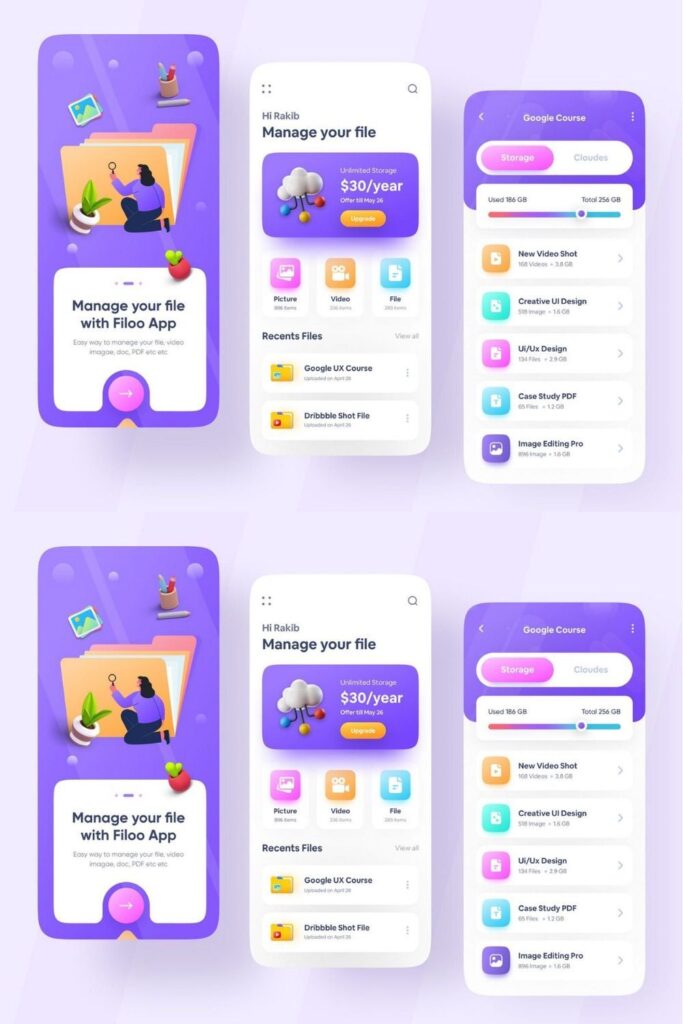

Core Elements of Effective Gamification UI UX
Effective gamification isn’t just about throwing a few badges into an app; it’s about strategically integrating game elements that enhance the user’s journey and drive specific behaviors. Let’s break down the core components:
Points & Rewards: These are often the simplest and most foundational elements.
- How they work: Users earn points for performing desired actions (e.g., completing a profile, reading an article, inviting a friend). These points can then accumulate, unlock higher levels, or be redeemed for rewards.
- Significance: Points provide immediate numerical feedback and a tangible measure of progress. They serve as a constant reminder of achievement.
- Examples: Loyalty programs where purchases earn points; fitness apps awarding points for miles run; social media platforms giving points for content creation.
Badges & Achievements: These are visual symbols of accomplishment.
- How they work: Badges are awarded for reaching specific milestones, demonstrating mastery, or completing unique challenges.
- Significance: They offer status, recognition, and a sense of pride. Badges are often publicly displayed, tapping into social validation.
- Examples: “First Purchase” badge, “Community Expert” badge, “Streak Master” badge in language learning apps.
Progress Bars & Visual Feedback: Clarity in progression is a powerful motivator.
- How they work: A visual indicator, often a bar or percentage, that shows how much of a task or goal has been completed.
- Importance: They provide a clear path forward, reduce cognitive load, and create anticipation for completion. Seeing progress makes daunting tasks seem more manageable.
- Examples: Profile completion indicators, onboarding flow progress, download bars, loading screens.
Leaderboards & Competition: For those driven by a competitive spirit.
- How they work: A ranked list of users based on points, achievements, or other metrics.
- Considerations: While motivating for some, leaderboards can be demotivating for users at the bottom. They work best when there are smaller, achievable segments or opportunities for everyone to feel a sense of success.
- Examples: Fitness app challenges where users compete for most steps; coding platforms ranking programmers by problem-solving speed.
Challenges & Quests: Structured goals to guide user behavior.
- How they work: Defined tasks or a series of tasks that users can undertake to earn specific rewards. Quests often have a narrative or thematic wrapper.
- Significance: They break down complex objectives into digestible steps, providing clear direction and purpose.
- Examples: “Complete 3 learning modules this week,” “Invite 5 friends to unlock a premium feature,” daily quests in productivity apps.
Virtual Currencies & Economies: Adding value within the system.
- How they work: In-app coins, gems, or tokens that users earn and can spend within the platform for virtual goods (e.g., avatars, themes) or even real-world discounts.
- Significance: They create an internal economy, giving tangible value to user actions and encouraging repeat engagement.
- Examples: Educational apps allowing users to spend earned ‘coins’ on extra lessons; social apps where ‘gems’ can be used to boost content visibility.
Narrative & Storytelling: Weaving a compelling tale around user actions.
- How they work: Integrating a story, theme, or overarching mission that gives context and meaning to user interactions.
- Significance: It engages users on an emotional level, making the experience more immersive and memorable.
- Examples: Fitness apps that present your journey as an adventure; learning platforms where each module contributes to ‘saving a kingdom.’
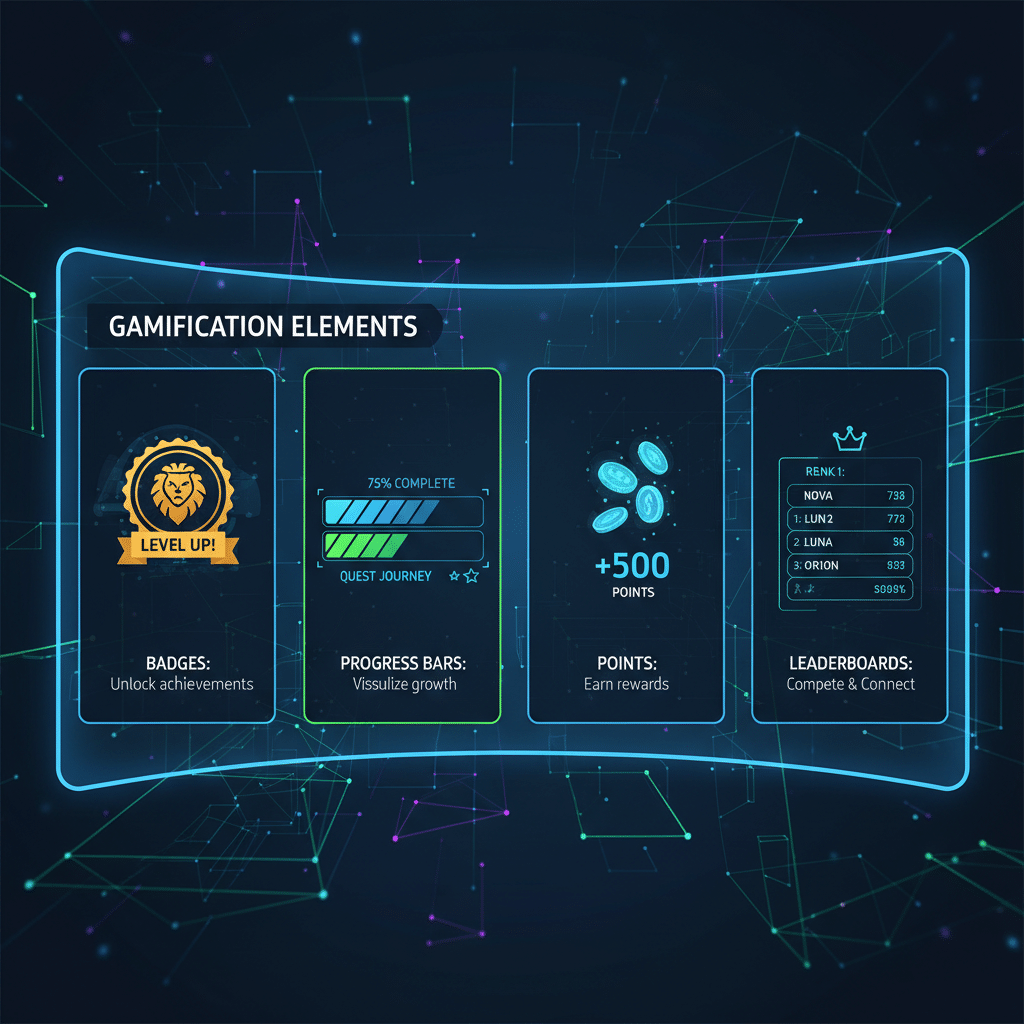
Implementing Gamification: Best Practices for UI/UX Designers
Designing effective gamification isn’t a one-size-fits-all solution. It requires careful planning and a deep understanding of your users and product goals. Here are some best practices for UI/UX designers looking to weave play into their platforms:
1. Understand Your Audience (Know Your Players): This is paramount. What motivates your users? Are they driven by competition, collaboration, mastery, or altruism? Different demographics and user groups respond to different game mechanics. A gamified financial app for adults will look very different from a learning app for children. Research your target audience extensively to tailor your approach.
2. Define Clear Goals and Desired Behaviors: Before adding any game elements, ask yourself: What specific user behaviors are you trying to encourage? Do you want users to complete more tasks, learn more effectively, increase social sharing, or stay active longer? Your gamification strategy should directly serve these business and user goals. If you’re designing for personality and purpose, remember that spaces that speak are those where every element serves a thoughtful function.
3. Start Simple, Iterate, and Test: Don’t try to implement every game mechanic at once. Begin with one or two key elements, like points and a progress bar, and see how users respond. A/B test different approaches. Gamification is an ongoing process of iteration and refinement based on user feedback and analytics.
4. Meaningful Rewards Over Arbitrary Gimmicks: Rewards must feel valuable and relevant to the user. If points or badges don’t lead to any perceived benefit (status, access, discounts, learning), users will quickly disengage. The reward should reinforce the behavior you want to encourage and align with the user’s intrinsic motivations.
5. Balance Challenge and Skill (Achieve Flow): The sweet spot of engagement is where challenges are neither too easy (boring) nor too hard (frustrating). Design your gamified journey to gradually increase in difficulty, allowing users to build skills and confidence. This creates a “flow state” that keeps them hooked.
6. Ensure Transparency and Fairness: The rules of your gamified system must be clear, understandable, and perceived as fair. Users should know how points are earned, how leaderboards are ranked, and what rewards they can achieve. Ambiguity can lead to frustration and distrust.
7. Avoid Over-Gamification: This is a critical pitfall. Too many game elements can clutter the UI, distract from the core functionality, and make the experience feel childish or overwhelming. Gamification should enhance the experience, not overshadow it. Think about how the importance of white space in design helps create clarity; the same principle applies to game mechanics. They should integrate seamlessly, not be jarring.
8. Integrate Seamlessly with Core UX: Gamification elements should feel like an organic part of the product, not an afterthought. They should align with the overall branding, tone, and user journey, enhancing the existing UX rather than acting as a separate, clunky layer.
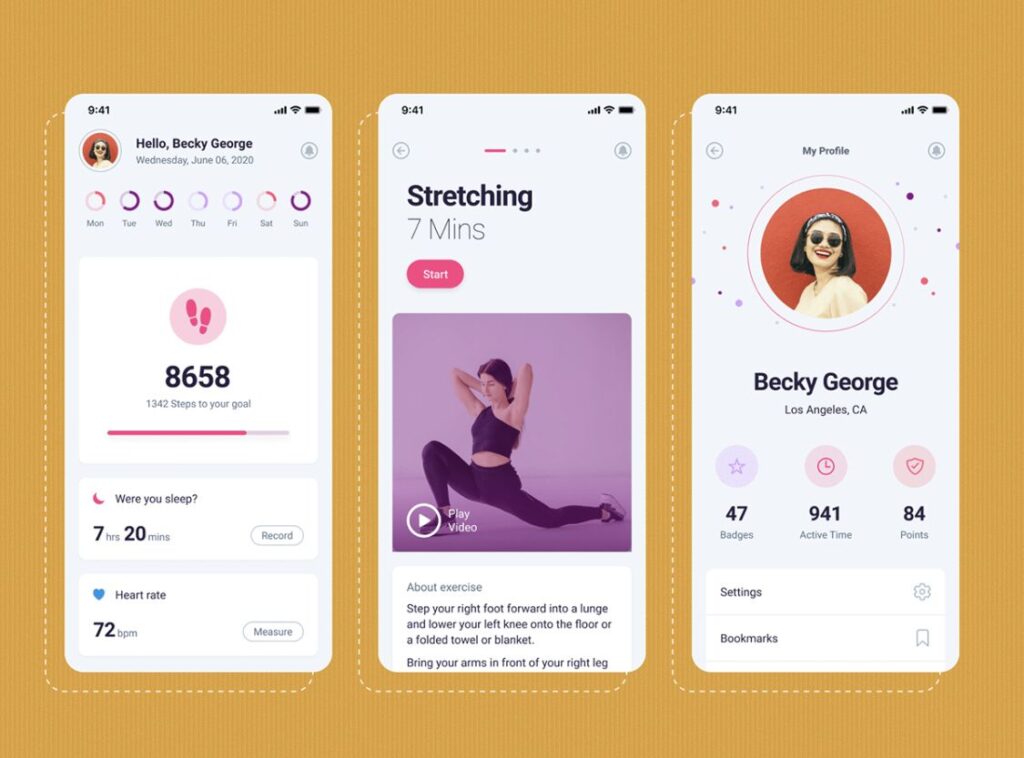
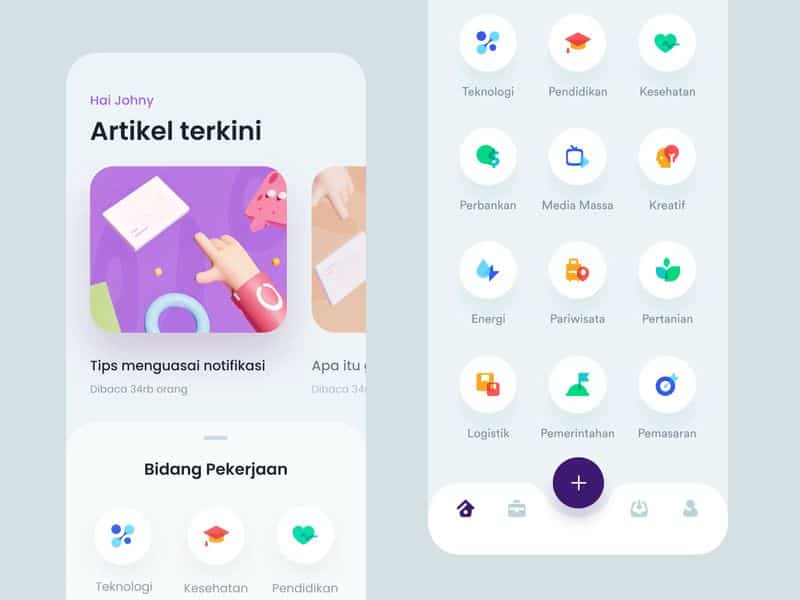
Gamification in Action: Real-World Examples
Gamification isn’t just theory; it’s transforming countless digital experiences every day. Here are some shining examples of how companies are effectively using gamification UI UX:
Fitness Apps (e.g., Strava, Peloton, Nike Training Club): These apps are masters of gamification. They use streaks for daily workouts, award badges for reaching distance or speed milestones, allow users to compete on leaderboards for challenges (e.g., “most miles in a month”), and offer social sharing features to celebrate achievements. This fosters a sense of accomplishment, community, and friendly competition, making exercise feel less like a chore.

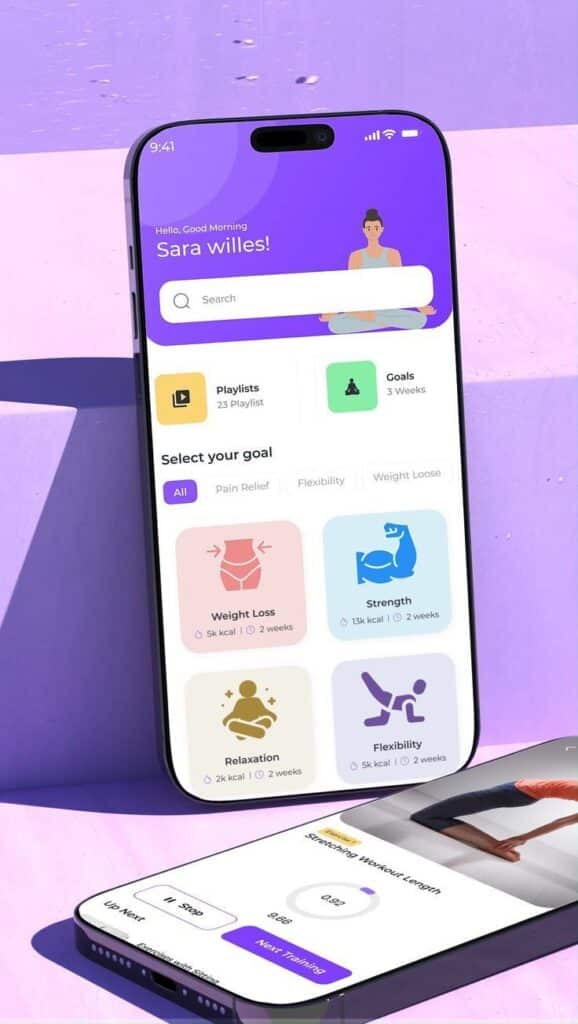
Language Learning Apps (e.g., Duolingo): Duolingo is perhaps the poster child for gamification. It uses daily streaks, experience points (XP) for completing lessons, levels, leaderboards to compete with friends, and virtual currency (lingots/gems) to purchase power-ups or outfits for their owl mascot. Each lesson is a “level,” and learning new words feels like unlocking achievements. This playful approach has made language learning accessible and highly engaging for millions.
Productivity Tools (e.g., Habitica, Forest): Habitica turns your to-do list into a role-playing game (RPG). Users create avatars, earn gold and XP for completing tasks, and fight monsters if they miss habits. Forest uses gamification to encourage focus; users “plant a tree” when they start a work session, and if they leave the app, the tree dies. Both leverage game mechanics to motivate users towards better habits and increased productivity.
E-commerce/Loyalty Programs: Many online retailers use gamification to encourage purchases and build loyalty. Think of tiered loyalty programs (Bronze, Silver, Gold status), points earned per dollar spent, badges for reviewing products, or challenges to earn extra discounts. Starbucks Rewards, for example, gives “stars” for purchases that unlock free drinks and personalized offers, turning coffee buying into a rewarding quest.
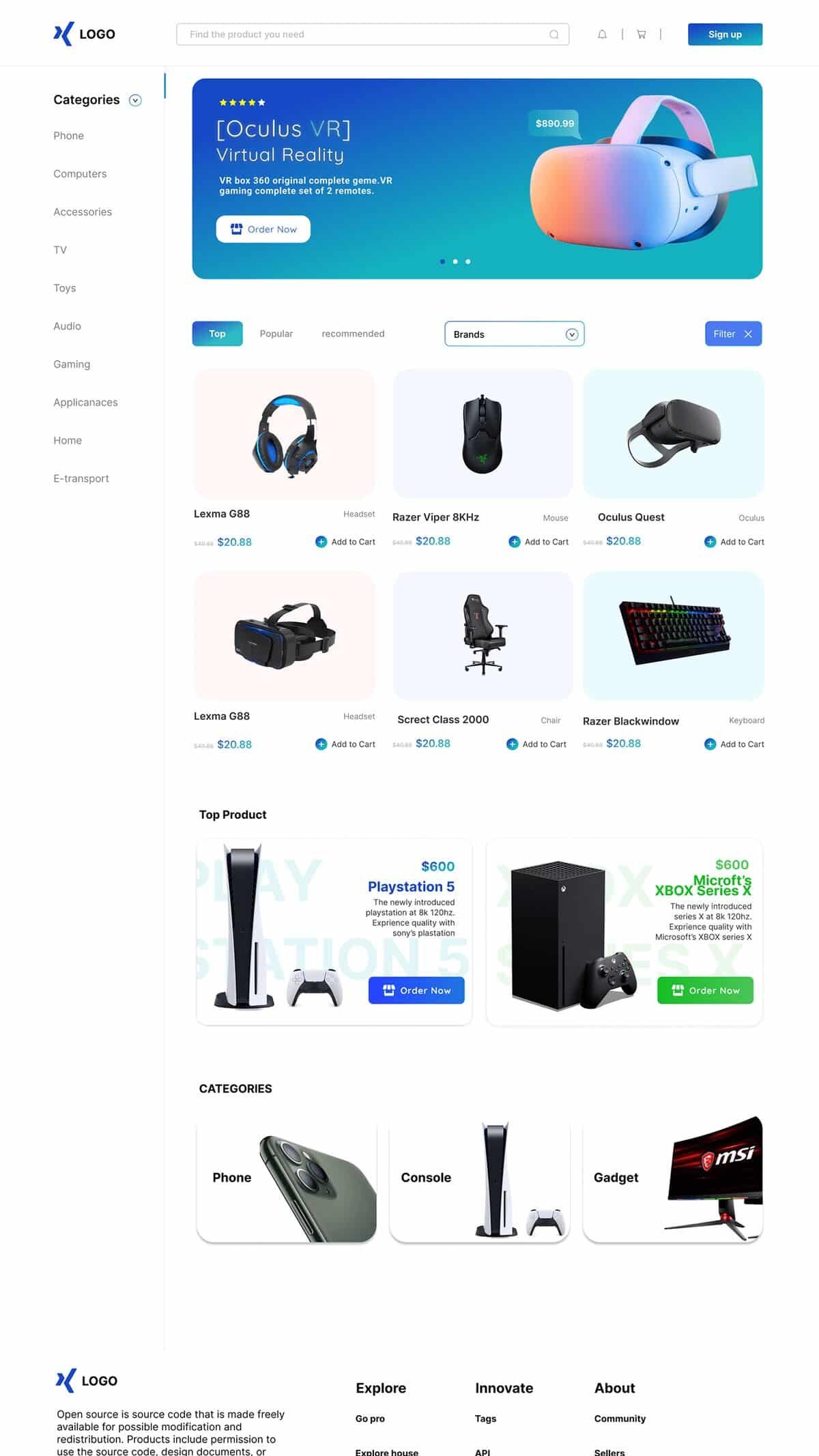
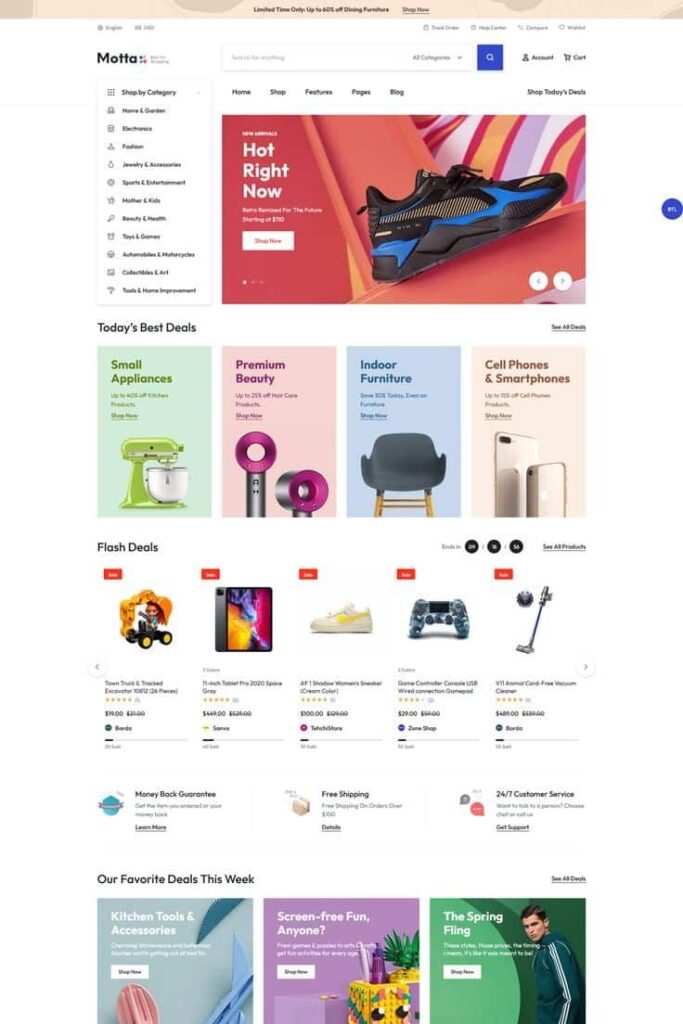
Education Platforms (e.g., Khan Academy, Codecademy): These platforms use mastery points, badges, and progress tracking to motivate learners. As students complete modules and pass quizzes, they see their knowledge base grow and earn recognition for their efforts. This turns learning into a series of achievable goals, keeping students engaged and pushing them towards deeper understanding.
Onboarding Processes: Even the initial user experience benefits. Instead of a bland “fill out your profile” prompt, many apps use a gamified onboarding flow. They might break it into small, guided steps with clear progress indicators, award a “New User” badge upon completion, or offer a small virtual reward. This makes the crucial first interaction engaging and ensures users complete vital setup steps. A well-designed onboarding can be as impactful as creative business card designs in making a strong first impression.
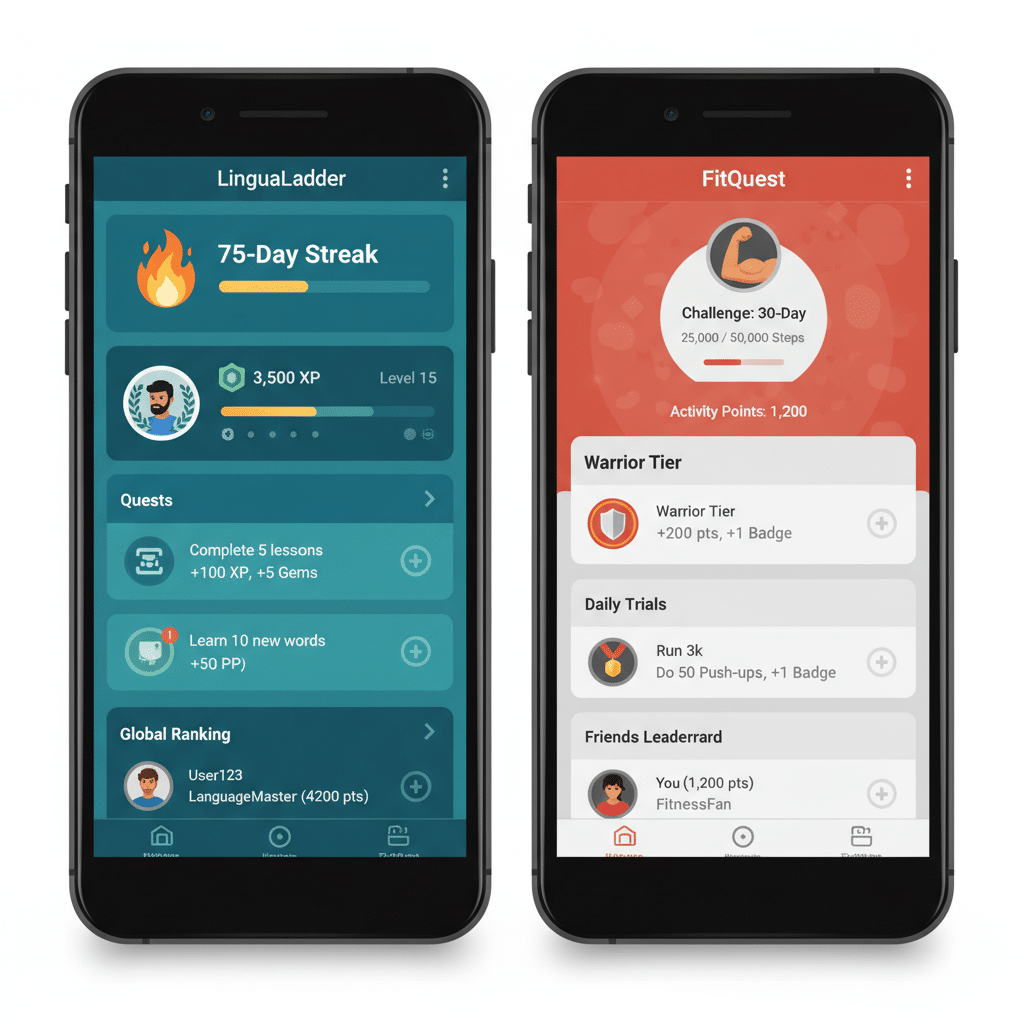
The Future is Playful: Evolving Trends in Gamification
Gamification UI UX is far from a static field. As technology advances and our understanding of user psychology deepens, so too does the sophistication of how we integrate play into digital experiences. The future promises even more personalized, intelligent, and immersive gamified interactions.
1. Personalization & Adaptive Gamification: Gone are the days of one-size-fits-all leaderboards. Future gamification will be highly personalized. Systems will learn user preferences, motivations, and skill levels to offer tailored challenges, relevant rewards, and dynamic difficulty adjustments. If you’re competitive, you might see more leaderboards; if you’re mastery-driven, more skill-based quests.
2. AI-Driven Gamification: Artificial intelligence will play a crucial role in making gamification smarter. AI can analyze vast amounts of user data to predict engagement patterns, identify optimal times for interventions, and even generate personalized game content. Imagine an AI tutor that dynamically adjusts its lessons and challenges based on your learning pace and emotional state, ensuring you’re always in that ‘flow state’.


3. Augmented Reality (AR) & Virtual Reality (VR) Integration: As AR and VR technologies become more mainstream, gamified experiences will move beyond screens into our physical environments. Imagine a fitness app using AR to project a virtual race onto your running path, or a learning app that turns your living room into an interactive historical site. The immersive potential of these technologies will create entirely new forms of gamified engagement.
4. Ethical Considerations and “Human-First” Design: With the increasing power of gamification, ethical considerations are coming to the forefront. The future will see a stronger emphasis on “human-first” design, ensuring that gamification is used to genuinely empower and benefit users, rather than manipulate or exploit them. This means avoiding “dark patterns” and focusing on promoting long-term well-being and genuine intrinsic motivation.
5. Gamification for Social Impact & Well-being: Beyond commercial applications, gamification is increasingly being used for positive social change. We’ll see more gamified initiatives in public health (e.g., encouraging healthy eating or vaccination), environmental sustainability (e.g., challenges for reducing carbon footprint), and community building. Making these critical areas feel more engaging can drive widespread positive behavior change.

Potential Pitfalls and How to Avoid Them
While gamification offers immense potential, it’s not a magic bullet. Poorly implemented gamification can backfire, leading to user frustration, disengagement, or even a sense of being manipulated. Being aware of the common pitfalls is crucial for successful design.
1. Meaningless Rewards: If the points, badges, or virtual items users earn hold no real value or significance to them, they quickly become irrelevant. Users need to perceive a benefit, whether it’s status, utility, or a tangible reward, for the system to work. A badge simply for existing offers no motivation.
2. Over-Gamification (Too Much of a Good Thing): Bombarding users with too many game elements can lead to a cluttered interface and cognitive overload. When every action has a point, a badge, or a pop-up, the novelty wears off, and it becomes distracting rather than engaging. Simplicity and strategic placement are key.
3. Poorly Designed Mechanics:
- Unfair Leaderboards: If only a tiny fraction of users can ever reach the top, leaderboards can be demotivating for the vast majority. Consider segmented leaderboards or alternative ranking systems.
- Impossible Challenges: Tasks that are too difficult or require an unreasonable time commitment will lead to user frustration and abandonment.
- Confusing Rules: If users don’t understand how to earn rewards or progress, they won’t engage.
4. Ignoring User Needs and Core Functionality: Gamification should enhance, not detract from, the core utility of your product. If users primarily come to your app to accomplish a specific task, gamification should make that task easier or more enjoyable, not add unnecessary layers of complexity. The primary focus should always be on providing value.
5. Short-Term Focus Over Sustained Engagement: Many gamified systems are great at driving initial engagement (e.g., first-time user bonuses). However, if the mechanics don’t offer long-term challenges, evolving rewards, or a sense of ongoing mastery, users will eventually lose interest. Aim for sustainable motivation, not just fleeting novelty.
6. Ethical Concerns and “Dark Patterns”: Gamification can be misused to manipulate users into behaviors that aren’t in their best interest. This includes using urgency to push unwanted purchases, exploiting addiction tendencies, or making it difficult to disengage. Ethical design prioritizes user well-being and transparency above all else. Always question if your gamified elements are truly empowering users or subtly coercing them.
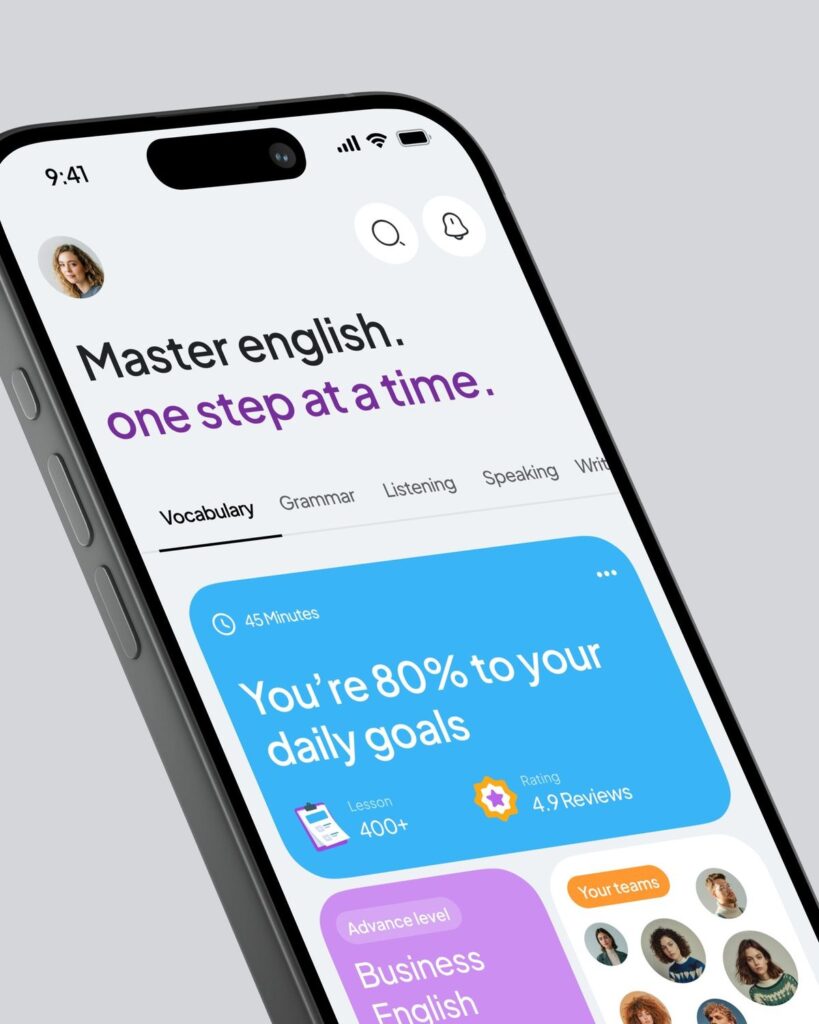

Designing for Delight: Bridging Gamification and Emotional UX
Ultimately, the goal of gamification UI UX isn’t just to make users perform actions; it’s to make them feel good while doing it. This is where the bridge between gamification and emotional UX becomes crucial. Designing for delight means intentionally crafting experiences that evoke positive emotions like joy, satisfaction, accomplishment, and connection.
Every small interaction can be an opportunity for delight. Think about the subtle celebratory animation when a task is completed, the encouraging message after earning a new badge, or the personalized feedback that makes a user feel seen and valued. These “micro-rewards” and positive affirmations contribute significantly to the overall emotional tone of the user experience.
Gamification excels at building a sense of accomplishment. When a user sees a progress bar fill up, unlocks a new level, or earns a badge, they experience a genuine feeling of success. This feeling is a powerful driver for continued engagement. By strategically designing these moments of achievement, designers can cultivate a positive feedback loop that fosters self-efficacy and confidence.
Beyond individual achievement, gamification can also cultivate a strong sense of community and belonging. Leaderboards, social challenges, and collaborative quests connect users with a larger group, tapping into our innate need for relatedness. When users feel part of something bigger, their engagement deepens, and their loyalty grows. For designers seeking to create truly impactful experiences that resonate emotionally, exploring UI UX inspiration websites can offer fresh perspectives not just on aesthetics, but on the subtle art of emotional design.
The aim is to create an experience that users want to return to, not just have to. It’s about transforming functional necessity into an enjoyable journey. When done right, gamification isn’t just about driving metrics; it’s about enriching lives and making digital interactions inherently more human.
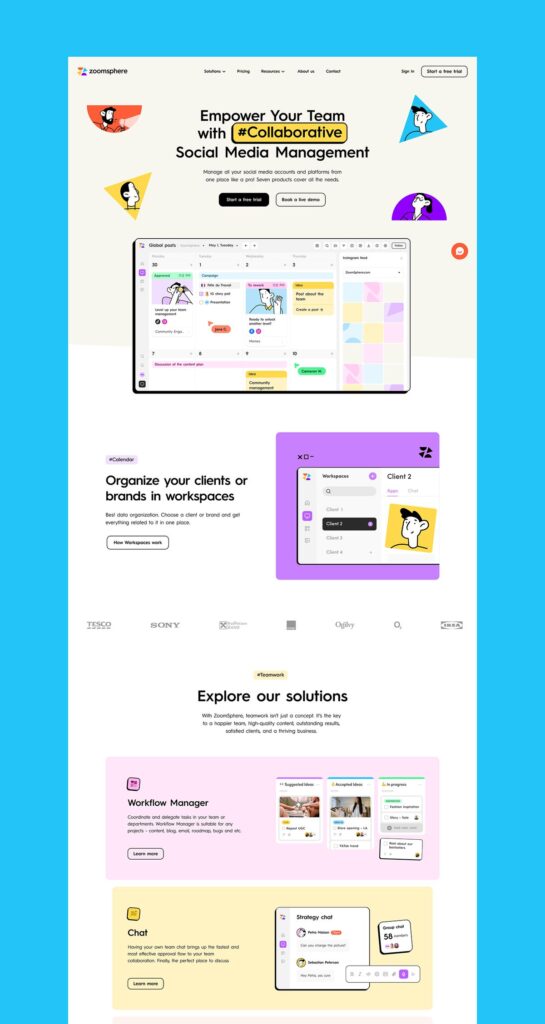
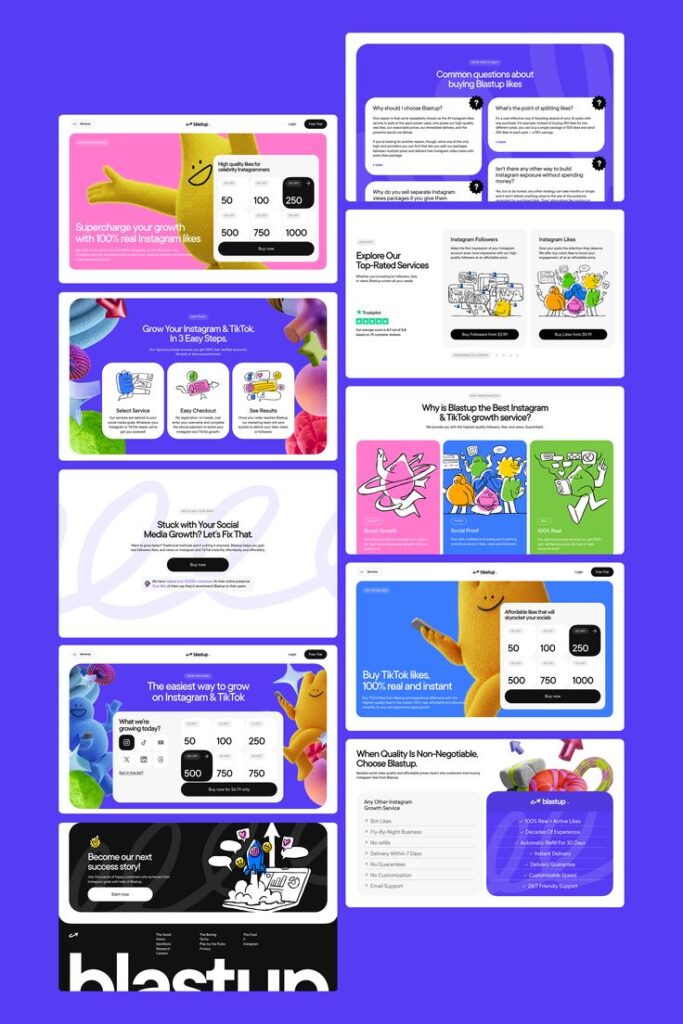
Conclusion
So, there you have it. Gamification UI UX isn’t just a fleeting trend; it’s a profound, psychologically informed approach to design that has the power to transform mundane digital tasks into engaging, motivating, and even delightful experiences. By carefully integrating elements like points, badges, progress bars, and challenges, designers can tap into our fundamental human desires for achievement, mastery, and social connection.
From making fitness routines feel like epic quests to turning language learning into a daily game, gamification has proven its ability to drive sustained engagement and loyalty across a vast array of industries. It’s about more than just adding flashy elements; it’s about understanding the user’s journey, anticipating their motivations, and designing an interface that guides, rewards, and inspires them every step of the way.
As technology continues to evolve, the future of gamification promises even more personalized, intelligent, and immersive interactions, further blurring the lines between work and play. But regardless of the tools or trends, the core principle remains: thoughtful, user-centric design that leverages the power of play will always be key to creating truly exceptional digital experiences.
Now, take a moment to reflect. What digital experiences in your life could benefit from a sprinkle of play? How might a simple point system or a satisfying progress bar transform your interaction with a challenging task? The potential is limitless when we dare to get playful with design.
- 44shares
- Facebook0
- Pinterest44
- Twitter0



